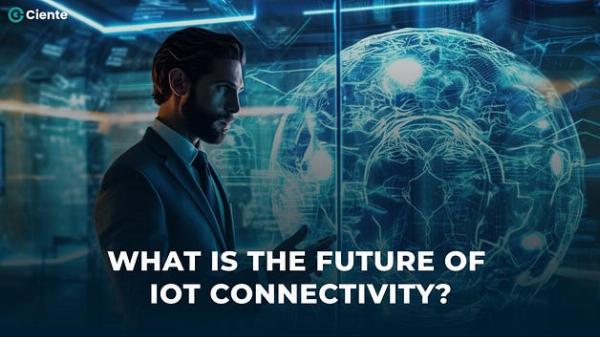What is the future of IoT connectivity?

Strong 8k brings an ultra-HD IPTV experience to your living room and your pocket.
The future of IoT holds boundless potential. Accelerated progress in the industrial internet will result from heightened network agility, the integration of artificial intelligence (AI), and the ability to deploy, automate, orchestrate, and secure a wide array of use cases at hyperscale. The significance lies not only in facilitating the simultaneous operation of billions of devices but also in harnessing vast volumes of actionable data capable of automating diverse business processes. As networks and IoT platforms evolve to surmount these challenges through increased capacity and AI, service providers will expand further into IT and web scale markets, creating entirely new revenue streams.
Key trends and advancements
1. 5G Technology Adoption: The widespread adoption of 5G networks is anticipated to revolutionize IoT connectivity. With faster speeds, lower latency, and increased capacity, 5G will enable more seamless communication between IoT devices, making it ideal for applications that demand real-time data processing.
2. Edge Computing Integration: Edge computing will play a crucial role in the future of IoT connectivity. By processing data closer to the source (at the edge of the network), edge computing reduces latency and minimizes the need for centralized data processing. This is particularly valuable for IoT applications where real-time responses are critical.
3. Mesh Networks for Enhanced Reliability: Mesh networking, where devices communicate with each other rather than relying solely on a centralized hub, will become more prevalent. This approach enhances reliability, scalability, and coverage, making it suitable for large-scale IoT deployments, especially in smart cities and industrial settings.
4. Enhanced Security Measures: As the number of connected devices grows, the importance of robust security measures will increase. Future IoT connectivity solutions will focus on implementing advanced encryption, authentication protocols, and secure device onboarding to protect against cyber threats and ensure the integrity of IoT ecosystems.
5. Low-Power Wide-Area Networks (LPWAN): LPWAN technologies, such as NB-IoT (Narrowband IoT) and LoRaWAN (Low Range Wide Area Network), will continue to gain popularity for IoT applications that prioritize low power consumption and long-range connectivity. These technologies are well-suited for devices that operate on battery power and need to transmit small amounts of data over long distances.
The future of IoT connectivity is likely to be shaped by faster and more reliable networks, decentralized processing through edge computing, diverse networking technologies, enhanced security measures, and a focus on standardization to enable seamless integration and collaboration across the IoT landscape.
AUTHOURS BIO:
With Ciente, business leaders stay abreast of tech news and market insights that help them level up now,
Technology spending is increasing, but so is buyer’s remorse. We are here to change that. Founded on truth, accuracy, and tech prowess, Ciente is your go-to periodical for effective decision-making.
Our comprehensive editorial coverage, market analysis, and tech insights empower you to make smarter decisions to fuel growth and innovation across your enterprise.
Let us help you navigate the rapidly evolving world of technology and turn it to your advantage.
Note: IndiBlogHub features both user-submitted and editorial content. We do not verify third-party contributions. Read our Disclaimer and Privacy Policyfor details.







